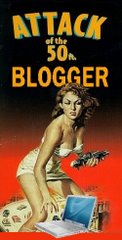Neon Dreams

On Thursday morning, I cruised around Los Angeles, sightseeing as much as I dared in the heavy traffic. One of the problems with this city is that when you see something interesting, like this Thai restaurant with a giant hot dog on its roof, it's usually too late to stop and take a proper photo.
Thanks to the internet, I found better pictures, as well as a little background. The hot dog, which first decorated an ordinary fast-food shack, is a beloved landmark at the corner of Western and Hollywood. The Thai restaurant (which continued to offer hot dogs on the menu, along with Gai Pad Prik) moved out, and developers are moved in. Sadly, bland condos are taking over central LA, much as they are in Chicago, erasing local eccentricity and charm.
Curbed LA: Thai Hot Dog/Insurance Stand Shuttered [Link]
After noon, I headed toward the Valley to visit Michael, my former classmate from art school. We were meeting at his studio, where he was going to give a demo of how to make neon forms. Aside from a cute electric plug sculpture (plugs being a theme for this trip), the first thing I noticed was the scooter.
Michael still had the old scooter I remember him riding back in Columbus. The hard hat with a rocket embedded in it? I forgot all about the thing until I laid eyes on it. I asked Mike about his circa 1979 Walkman, the first I had ever seen. Of course he still had it. He even bought a couple on Ebay and refurbished them. Mike told me that back in the 70s, the Walkman (which was all metal and beautifully engineered) retailed for about $400.
"Neon" is a generic name for bent glass tubing which is filled with one of the so-called "nobel gases," such as neon or argon. The gas is sealed in at low pressure, and a high charge of electricity causes it to glow. Neon glows bright red, and most early neon signs (c. 1920-1930) were that color, by default. The introduction of different gases, glass colors, and metals such as mercury, permitted glass benders to expand the color range to nearly the full spectrum.
The small swirled pieces above were created by an artist training with Michael. She bent each component as part of a larger work commissioned by another artist. The big red circle is Michael's. I asked him how he made circles: did he use a mold or form? No, it's all eyeballed, much as it has been done for decades.
Michael started his demo by taking a glass tube and heating it in a special double-headed welding torch. Using a plug with a thin tube attached, he blew through it to prevent the glass from collapsing. While trying to photograph this close-up, I backed into his other torch (on the left, above). Fortunately, I felt the heat and jumped away before I also became a torch. "Did you set yourself on fire?" he asked, nonchalantly. Apparently he had gone up in flames himself more than once, and it was no longer a big deal. He also mentioned that the laws of physics dictated that you would tend to put your hand on the hottest part of the glass when trying to turn it. Kind of like toast always falling buttered side down, I guess.
Once the glass tube was a little floppy, Michael put it on an asbestos pad on his work table, and started to bend it. He cut another piece of tubing, this time cobalt-blue, imported from Italy. He then demonstrated fusing two pieces together, and twirled the two cut ends together in the flame, still blowing into the tube to prevent collapse. How anyone ever figured out how to do this to begin with...

After the glass had cooled, it was time to insert electrodes and remove oxygen from the tube, so that gas (in this case, neon) could be pumped in at low pressure. I'll admit to being a bit unclear when describing what happened next. It involved a lot of electricity, that's for sure. Mike has a transformer under his workbench, and built his own regulator box, which looks like something out of a horror movie. He said "Don't get near this or point at it." Reason: the charge (1800 volts) might jump and use me as a conduit. You don't have to tell me twice. 
Using a hypodermic needle, Michael inserted a tiny drop of mercury into the tube as he completed the seal. "You've probably seen too many of these in the last year." Yes, but it was nice to see one without my own blood in it, for a change.
As the mercury fumes gradually filled the tube, the natural bright red of electrified neon changed to an icy blue. Totally cool.
Then, we went out for Japanese noodles. What a perfect day!
Next: The Museum of Neon Art
The history of neon signs [Link]


1 comment:
You are a wonderful tour guide! And "Lucy, you splain things so well!"
Post a Comment